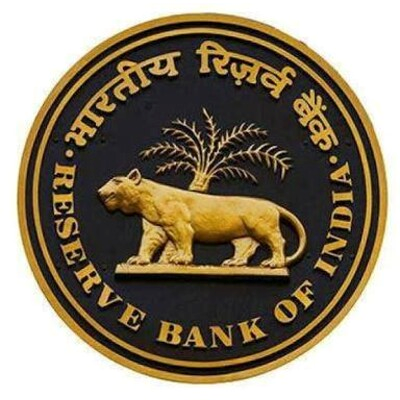The Ripple Effect of China's Manufacturing Surge: A Double-Edged Sword for Asia
June 7, 2025, 4:48 am
China is back in the spotlight. Its manufacturing sector is revving up, sending waves across global markets. This surge stirs anxiety in Asia, where local industries fear being drowned by a tide of cheap imports. Yet, amid this storm, there’s a silver lining. Economists argue that the influx of low-cost Chinese goods could ease inflation woes for many countries.
In Singapore, Vincent Xue runs an online grocery business. He sources products from China, benefiting from steep discounts. With Chinese suppliers struggling to clear excess inventory, prices have plummeted. Xue’s partnership with Pinduoduo, a major Chinese e-commerce platform, means he’s now busier than ever. Each week, containers filled with discounted goods arrive at his doorstep.
But not everyone is celebrating. Countries across Asia are bracing for the impact of this “China shock.” The fear is palpable. Local manufacturers worry about being undercut. Economists warn that while consumers may enjoy lower prices, the long-term effects on local industries could be dire.
China’s production overdrive is a response to its own economic challenges. Domestic consumption is sluggish, prompting a push for exports. This strategy is reminiscent of the late 1990s and early 2000s when a similar surge in Chinese imports kept inflation low but cost many jobs in local manufacturing.
The numbers tell a compelling story. Chinese exports to ASEAN countries surged by 11.5% in early 2025, while shipments to the U.S. fell by 2.5%. In April alone, exports to ASEAN jumped by 20.8%. These figures illustrate a shift in focus, as China seeks new markets to absorb its excess production.
For countries like Australia, this influx of cheap goods could be a boon. Economists suggest that lower prices may help alleviate the cost-of-living crisis. In contrast, nations with fragile manufacturing bases face a tougher road ahead. India, Vietnam, and Indonesia have already implemented protective measures to shield local producers from the onslaught of cheap imports.
The Reserve Bank of India (RBI) recently made headlines by cutting its benchmark interest rate by 50 basis points, bringing it down to 5.5%. This move was unexpected, as many analysts anticipated a smaller cut. The RBI’s decision reflects a broader trend in Asia, where central banks are responding to the dual pressures of inflation and growth.
India’s inflation rate has been on a downward trajectory, allowing the RBI to act decisively. The latest figures show inflation at 3.16%, the lowest since July 2019. This drop provides the central bank with room to maneuver, but it also highlights the delicate balance between fostering growth and controlling inflation.
As central banks across Asia consider their next moves, the impact of cheap Chinese imports looms large. Economists predict that the disinflationary effects of this “China shock” will ripple through the region. Countries like Thailand may find themselves particularly vulnerable, facing a potential slide into deflation.
The situation is complex. On one hand, consumers benefit from lower prices. On the other, local industries may struggle to compete. This trade-off poses a significant challenge for policymakers. They must navigate the turbulent waters of global trade while safeguarding domestic interests.
The RBI’s shift to a “neutral” monetary policy stance signals a cautious approach moving forward. With inflation expectations moderating, the central bank will need to remain vigilant. Weather-related uncertainties and evolving tariff concerns could impact global commodity prices, adding another layer of complexity to the economic landscape.
As the world watches, the question remains: can Asia harness the benefits of low-cost Chinese goods without sacrificing its manufacturing base? The answer is not straightforward. Countries must weigh the immediate gains against potential long-term consequences.
In this intricate dance of economics, the stakes are high. For consumers, the arrival of cheaper goods is a welcome relief. For local manufacturers, it’s a wake-up call. The challenge lies in finding a balance that fosters growth while protecting domestic industries.
As the “China shock” unfolds, Asia stands at a crossroads. The path forward will require careful navigation. Policymakers must remain agile, adapting to the shifting tides of global trade. The silver lining may be bright, but the shadows of uncertainty loom large.
In the end, the ripple effect of China’s manufacturing surge will shape the economic landscape for years to come. The choices made today will echo through the corridors of commerce, influencing the balance between growth and stability. The world is watching, and the stakes have never been higher.
In Singapore, Vincent Xue runs an online grocery business. He sources products from China, benefiting from steep discounts. With Chinese suppliers struggling to clear excess inventory, prices have plummeted. Xue’s partnership with Pinduoduo, a major Chinese e-commerce platform, means he’s now busier than ever. Each week, containers filled with discounted goods arrive at his doorstep.
But not everyone is celebrating. Countries across Asia are bracing for the impact of this “China shock.” The fear is palpable. Local manufacturers worry about being undercut. Economists warn that while consumers may enjoy lower prices, the long-term effects on local industries could be dire.
China’s production overdrive is a response to its own economic challenges. Domestic consumption is sluggish, prompting a push for exports. This strategy is reminiscent of the late 1990s and early 2000s when a similar surge in Chinese imports kept inflation low but cost many jobs in local manufacturing.
The numbers tell a compelling story. Chinese exports to ASEAN countries surged by 11.5% in early 2025, while shipments to the U.S. fell by 2.5%. In April alone, exports to ASEAN jumped by 20.8%. These figures illustrate a shift in focus, as China seeks new markets to absorb its excess production.
For countries like Australia, this influx of cheap goods could be a boon. Economists suggest that lower prices may help alleviate the cost-of-living crisis. In contrast, nations with fragile manufacturing bases face a tougher road ahead. India, Vietnam, and Indonesia have already implemented protective measures to shield local producers from the onslaught of cheap imports.
The Reserve Bank of India (RBI) recently made headlines by cutting its benchmark interest rate by 50 basis points, bringing it down to 5.5%. This move was unexpected, as many analysts anticipated a smaller cut. The RBI’s decision reflects a broader trend in Asia, where central banks are responding to the dual pressures of inflation and growth.
India’s inflation rate has been on a downward trajectory, allowing the RBI to act decisively. The latest figures show inflation at 3.16%, the lowest since July 2019. This drop provides the central bank with room to maneuver, but it also highlights the delicate balance between fostering growth and controlling inflation.
As central banks across Asia consider their next moves, the impact of cheap Chinese imports looms large. Economists predict that the disinflationary effects of this “China shock” will ripple through the region. Countries like Thailand may find themselves particularly vulnerable, facing a potential slide into deflation.
The situation is complex. On one hand, consumers benefit from lower prices. On the other, local industries may struggle to compete. This trade-off poses a significant challenge for policymakers. They must navigate the turbulent waters of global trade while safeguarding domestic interests.
The RBI’s shift to a “neutral” monetary policy stance signals a cautious approach moving forward. With inflation expectations moderating, the central bank will need to remain vigilant. Weather-related uncertainties and evolving tariff concerns could impact global commodity prices, adding another layer of complexity to the economic landscape.
As the world watches, the question remains: can Asia harness the benefits of low-cost Chinese goods without sacrificing its manufacturing base? The answer is not straightforward. Countries must weigh the immediate gains against potential long-term consequences.
In this intricate dance of economics, the stakes are high. For consumers, the arrival of cheaper goods is a welcome relief. For local manufacturers, it’s a wake-up call. The challenge lies in finding a balance that fosters growth while protecting domestic industries.
As the “China shock” unfolds, Asia stands at a crossroads. The path forward will require careful navigation. Policymakers must remain agile, adapting to the shifting tides of global trade. The silver lining may be bright, but the shadows of uncertainty loom large.
In the end, the ripple effect of China’s manufacturing surge will shape the economic landscape for years to come. The choices made today will echo through the corridors of commerce, influencing the balance between growth and stability. The world is watching, and the stakes have never been higher.

